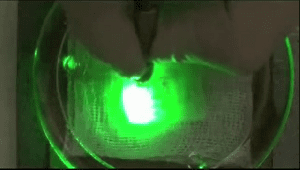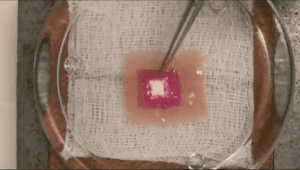
There may well be a few broken hearts this Valentine’s Day, but researchers at the MARCS Institute for Brain, Behaviour and Development believe they have the answer.
Scientists have successfully created a new flexible polymer patch that attaches to live heart tissue and improves the conduction of electrical impulses across a damaged heart without the need for stitches.
The “suture-less” patch, which has been shown to work in rats, is long lasting and has the significant advantage in that it can be stuck directly onto the heart using a patented technique developed by Western Sydney University (WSU) researcher for the MARCS Institute , Dr Antonio Lauto.
The technique involves shining a green laser on to the patch, which was developed from naturally sourced materials, to bond it with live tissue.
Dr Lauto, who is based at the Campbelltown campus of WSU, said although the technique seemed simple, it involved complex design and development.

“The electrical conducting polymer patch adopts a non-invasive treatment option to address a number of complications that arise after a heart attack,” he said.
“This innovative patch is a medical breakthrough in that it is stable and retains its conductivity in physiological conditions for more than two weeks, compared with the usual one day of other patches.
“Complications that follow a heart attack, including scarring that slows down and disrupts the conduction of electrical impulses across the heart (and can lead to potentially fatal disturbances of the heart rhythm) can be addressed using this patch.”
The patch is now being tested in a larger animal model to confirm the beneficial effects on the heart.
Upon completion of this trial, the patch will be modified to address current limitations, such us slow degradation and possible foreign body reaction.
It is estimated that the patch will be ready for human trials within three to five years.
This work is an international collaboration under the leadership of Dr Damia Mawad and Professors Sian Harding, Molly Stevens and Cesare Terracciano from the Imperial College London.
The MARCS Institute is located at the Campbelltown campus, the Kingswood campus and the Bankstown campus of WSU.
If you’d like to find out more about what the MARCS institute does click this link here.

